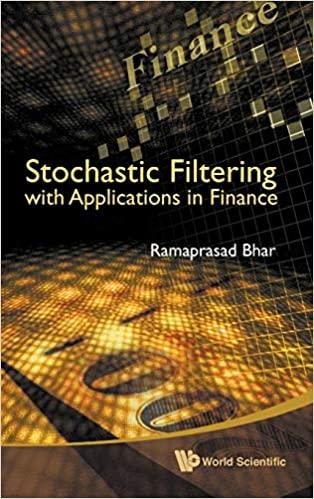Question
Mini Case Chapter 10 You have just graduated from the MBA program of a large university, and one of your favorite courses was Todays Entrepreneurs.
Mini Case Chapter 10
You have just graduated from the MBA program of a large university, and one of your favorite courses was Todays Entrepreneurs. In fact, you enjoyed it so much you have decided you want to be your own boss. While you were in the masters program, your grandfather died and left you $1 million to do with as you please. You are not an inventor, and you do not have a trade skill that you can market; however, you have decided that you would like to purchase at least one established franchise in the fast-foods area, maybe two (if profitable). The problem is that you have never been one to stay with any project for too long, so you figure that your time frame is 3 years. After 3 years you will go on to something else.
You have narrowed your selection down to two choices: (1) Franchise L, Lisas Soups, Salads, & Stuff, and (2) Franchise S, Sams Fabulous Fried Chicken. The net cash flows shown below include the price you would receive for selling the franchise in Year 3 and the forecast of how each franchise will do over the 3-year period. Franchise Ls cash flows will start off slowly but will increase rather quickly as people become more health conscious, while Franchise Ss cash flows will start off high but will trail off as other chicken competitors enter the marketplace and as people become more health-conscious and avoid fried foods. Franchise L serves breakfast and lunch whereas Franchise S serves only dinner, so it is possible for you to invest in both franchises. You see these franchises as perfect complements to one another: You could attract both the lunch and dinner crowds and the health-conscious and not-so-health-conscious crowds without the franchises directly competing against one another.
Here are the net cash flows (in thousands of dollars):
| Expected Net Cash Flows | ||
| Year | Franchise L | Franchise S |
| 0 | -$100 | -$100 |
| 1 | 10 | 70 |
| 2 | 60 | 50 |
| 3 | 80 | 20 |
e. (1) Draw NPV profiles for Franchises L and S. At what discount rate do the profiles cross? (2) Look at your NPV profile graph without referring to the actual NPVs and IRRs. Which franchise or franchises should be accepted if they are independent? Mutually exclusive? Explain. Are your answers correct at any cost of capital less than 23.6%?
f. What is the underlying cause of ranking conflicts between NPV and IRR?
g. Define the term modified IRR (MIRR). Find the MIRRs for Franchises L and S.
h. What does the profitability index (PI) measure? What are the PIs of Franchises S and L?
i. (1) What is the payback period? Find the paybacks for Franchises L and S. (2) What is the rationale for the payback method? According to the payback criterion, which franchise or franchises should be accepted if the firms maximum acceptable payback is 2 years and if Franchises L and S are independent? If they are mutually exclusive? (3) What is the difference between the regular and discounted payback periods? (4) What is the main disadvantage of discounted payback? Is the payback method of any real usefulness in capital budgeting decisions?
Step by Step Solution
There are 3 Steps involved in it
Step: 1

Get Instant Access to Expert-Tailored Solutions
See step-by-step solutions with expert insights and AI powered tools for academic success
Step: 2

Step: 3

Ace Your Homework with AI
Get the answers you need in no time with our AI-driven, step-by-step assistance
Get Started


